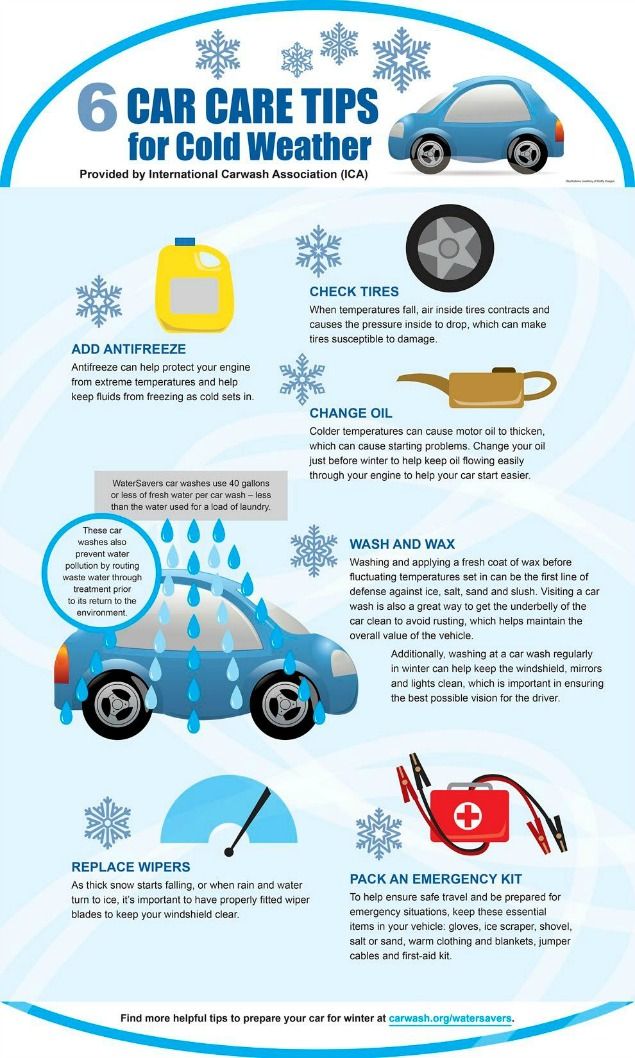Do I need to buy winter tires or can I just get snow chains?
What the heck is siping?
When do I have to have studded tires and when will studless do?
If you’re wondering how to pick the right tires for winter, or whether you need them at all, here are answers to the eight most common questions about winter tires.
(A lot of people still call tires used in the cold months “snow tires,” but it’s more accurate to call them “winter tires.” For purposes of this article, we use both terms to mean tires designed for winter driving.)
Winter tires are important for safe driving if you live somewhere that gets snow, ice, sleet or freezing rain and temperatures of 40 degrees or colder. They’re also the right option if you routinely make trips through snow zones or the mountains during the cold months.
Learn about the difference between all-season tires and snow/winter tires here.
Some all-season tires have an M+S rating. This stands for mud and snow. These tires have a more aggressive tread design to deliver better traction in a variety of conditions using larger tread blocks and wider gaps between them. The purpose of these tires is to achieve optimal tire life along with good performance in most weather conditions.
But it doesn’t mean they’re adequate for winter driving. In slick conditions, they don’t deliver the traction, control and short stopping distance that you get from a snow tire.
If you want safer driving on packed snow or ice, look for tires made with the right compound and branded with the Mountain Snowflake. This means they’ve actually been tested and certified to perform in winter conditions.
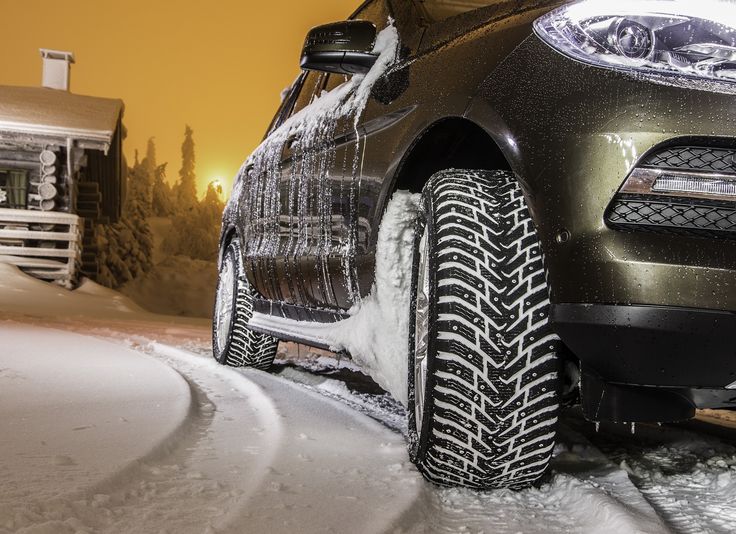 “I have all-season tires, so I don’t need snow tires. Right?”
“I have all-season tires, so I don’t need snow tires. Right?”Wrong. Don’t believe it? See this driving comparison between all-season and snow tires.
If you’re driving on snowy or icy roads, only winter tires will give you good stopping ability and secure handling. This is because they’re built very differently. How?
Different compound. Summer and all-season tires are made with a stiffer rubber compound. This helps the tire retain its shape when it’s rolling on hot pavement. Winter tires are made with hydrophilic (that’s “water-loving”) rubber which stays softer and more pliable in winter weather. This more flexible rubber is one reason you get more traction on snow and ice.
Another reason is tread design. Winter tires have a higher “void-to-lug” ratio, meaning there are larger grooves between the blocks of tread (the lugs). The tread blocks also have irregular, sharp edges.
When a tire with wide grooves and biting edges travels over packed snow, it cuts through and scoops some of the snow into the voids on the tire surface, allowing the tread to stay in closer contact with the road. Then the velocity of the tire ejects this snow from the grooves. This is how winter tires provide more aggressive traction than all-season tires.
Then the velocity of the tire ejects this snow from the grooves. This is how winter tires provide more aggressive traction than all-season tires.
Most snow tires are already siped, with small patterned slits on the lugs that create extra edges for better road grip. Additional safety siping can be done for a fee on new or used tires. If you’re regularly traveling on slick roads, the added traction from custom siping is a good way to improve starting, stopping and rolling traction.
Before you jump on that set of “lightly used” winter tires on Craigslist, do three quick checks. First, verify they’re the right size. You can look in your vehicle owner’s manual or right on your existing tires’ sidewall close to the rim for the series of numbers. (Here’s a primer on what they all mean.) If you’re not sure the tires you’re considering are the correct size, call a tire dealer and make sure.
Second, measure the tread depth by using a tire tread depth gauge. You can pick one up at any auto parts store for under five bucks. Or have a tire store tech do it; it should be free. Take measurements in multiple places in the grooves on each tire.
A new tire typically has 11/32nds of an inch in tread depth. A rule of thumb is that if there are 6/32nds of an inch or less in tread remaining on a winter tire, it’s about to lose a good deal of snow performance. So think carefully about whether you’re going to get what you’re paying for.
Third, be sure there’s not a problem with uneven wear. Did your tread gauge measurements show any tread depth difference between the four tires? It’s really common for tires to wear differently over time. If the disparity between any two tires is more than 3/32nds of an inch, pass on those used tires. Driving with mismatched tires or putting the wrong size on your vehicle will NOT save you money in the long run. You’re risking big repair bills for your transmission.
It’s also a bad idea to put winter tires on only the front or back. This creates a big difference in traction between your axles. And this will mean less steering control, not more.
Tire chains can be important — and are sometimes required — for traction when you’re traveling in the mountains or on icy roads. But they’re not made for driving at highway speed or on bare pavement. You risk damaging your chains if you try this.
Don’t think of chains as a substitute for winter tires but as an option you need to have ready when you’re driving on snow.
Depending on the conditions and your state’s rules, traction controls in snowy areas will range from requiring only the minimum — like M+S tires on the drive axle — up to chains on all tires, including all-wheel and four-wheel drive vehicles. Here are California’s chain controls, for example.
The tire dealer will consider your driving habits, where you’re traveling and typical winter conditions in your area when recommending what you need.
Studless snow tires work well on slush and packed snow. They get traction through wide, deep grooves and lots of irregular surfaces with sharp edges. This allows the rubber to cut through snow and grip the road.
Studded tires provide the best traction you can get, even when you're encountering ice or packed snow. Studs are lightweight, small metal spikes that are staggered across the tread. They help break through packed snow and ice-covered roads to give you better traction. Note: Extra tread depth is needed to accommodate studs, so studded tire size options are limited. Also, the times of year when studded tires are allowed on the road vary by state. Here’s a guide to studded tire regulations.
It’s a question of time and money. Here’s a way to decide:
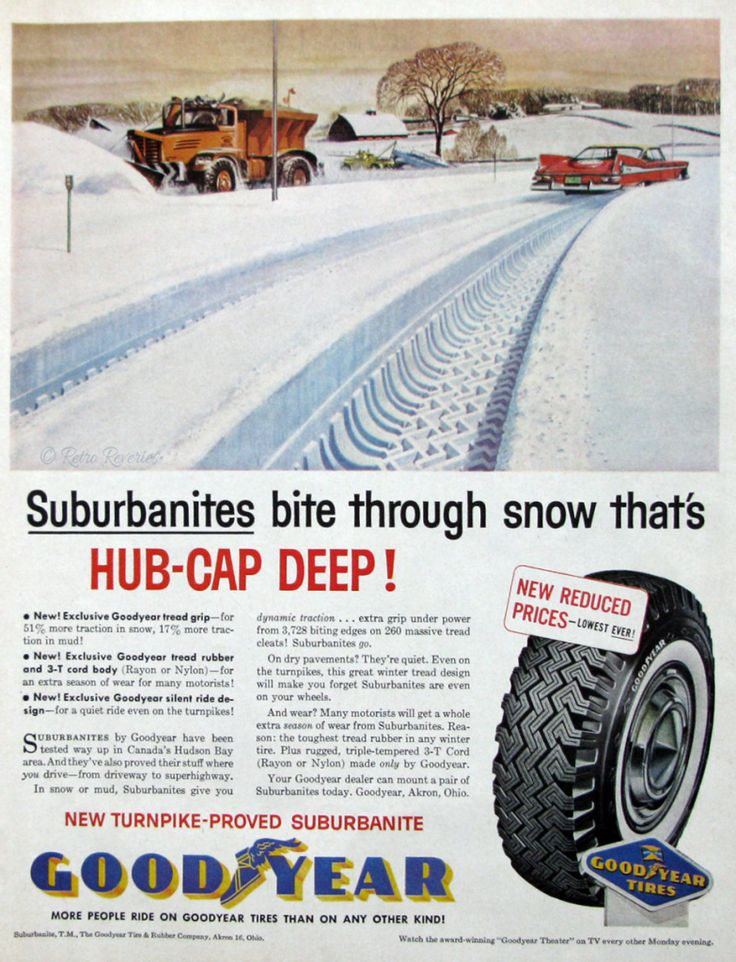 (Les Schwab will swap out tires purchased at our stores at no charge if they’re mounted on separate wheels.)
(Les Schwab will swap out tires purchased at our stores at no charge if they’re mounted on separate wheels.)Also consider the extra wear and tear on your tires that comes with unmounting and remounting tires on only one set of wheels. Especially with low-profile tires, it’s not uncommon for an inexperienced tire tech to damage the inside edge of a tire near the beads, the places where the tire gets pried off and pushed back on.
If you’re leaning toward separate wheels for your winter tires, here are some tips on selecting the best wheel finishes for winter conditions.
Check out tests from the Tire Industry Association in this video to see what the difference winter tires can make.
Some all-season tires are marketed as working equally well in summer and winter. That may be true in dry, mild climates where the seasons don’t vary much. But you’ll only get confident traction, braking and control on snow and ice with a winter tire. If you live in a place with winter weather, you’ll need tires marked with the Three-Peak Mountain Snowflake for safest handling. Because not all tires with a mountain snowflake have a winter compound, ask your tire dealer what you really need.
Want more tips on winter road safety? See 19 Winter Driving Resources You Can’t Do Without.
SHOP WINTER TIRES
Winter is officially here and that means it’s time for winter tires. It might seem like a great expense—if the tires on my car weren’t made for all seasons, why do they call them all season tires?—but trust us, they’re worth it.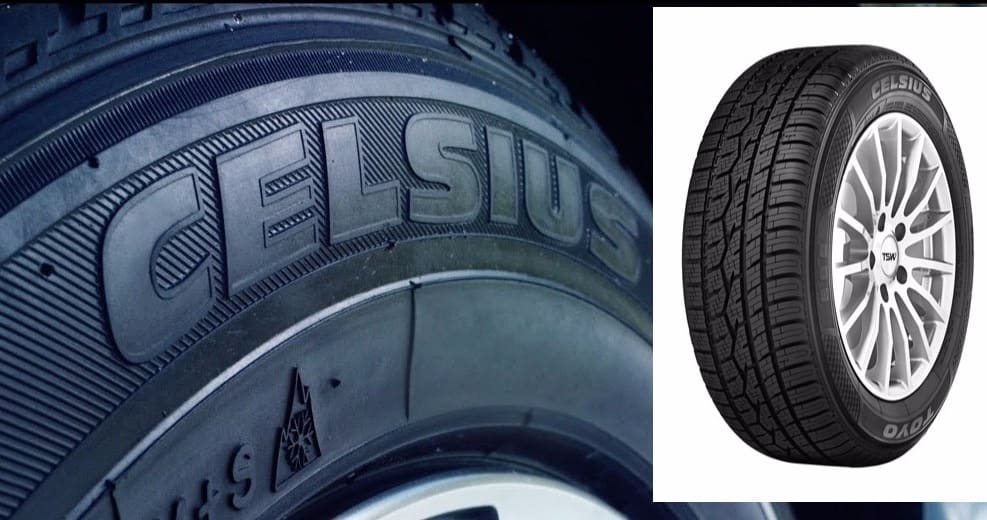 Really. Not sure which kind is best? Here’s what you need to know before buying some.
Really. Not sure which kind is best? Here’s what you need to know before buying some.
Booming sales of crossovers and Subarus of all kinds are strong evidence of how many drivers on the road these days that seem to think that all- or four-wheel drive will save them on snow and ice. They go buy an all-wheel drive SUV, slap on a set of all-season tires and go about their merry way.
And while all-wheel drive can make you feel invincible while you’re trundling down Main Street or around the parking lot, the truth of the matter is that an all-season tire will never beat out a winter tire in stopping and turning during slippery conditions. As Ron Margadonna, a senior technical marketing manager at Michelin with an extensive background in winter tires, puts it, “Your mobility is only as good as the tires you’re driving on.”
A tire’s basic job is to keep the car controlled and on the road. You can have any kind of tire you want (summer, all-season or winter), but their usefulness is broken down into three characteristics, explains Woody Rogers, Tire Rack’s director of tire product information.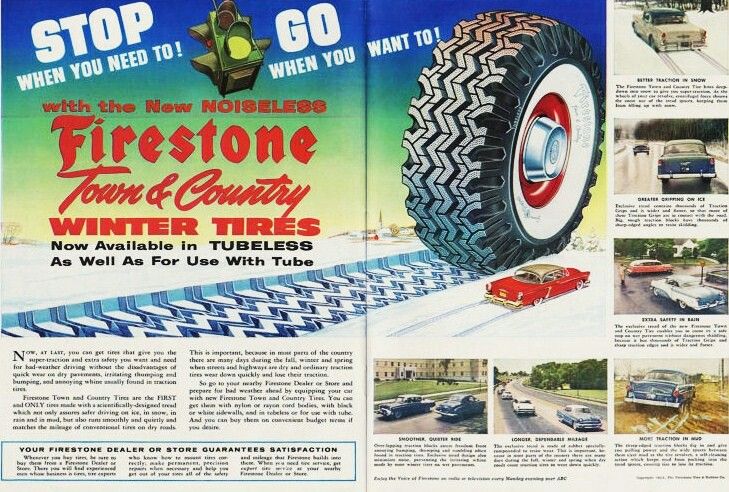 They are:
They are:
Winter tires will have an optimized tread pattern for low-traction situations. They also must have a sufficient tread depth to clear through slush or snow. (That’s a “volumetric driving event” in tire-speak.) Lastly, a winter tire’s compound (which you cannot see) is designed at a molecular level to stay soft, malleable and grippy as temperatures drop.
Rogers used a candy bar as an example. At room temperature, a candy bar is just right. Delicious, even. But if you put it in the freezer for a bit, it becomes rock-hard, brittle and breakable. The same happens to tire compounds that were not designed for cold temperatures: the traction and grippiness deceases dramatically.
You also might have heard that you only need two winter tires, usually a set for the car’s driving wheels. Margadonna immediately debunked that, asserting that you should always put winter tires at all four corners in order to maximize handling, even if you don’t have all- and four-wheel drive. If you lose all the traction on your back wheels, like you do intentionally for skidplate racing, your car starts driving like it’s on roller skates.
If you lose all the traction on your back wheels, like you do intentionally for skidplate racing, your car starts driving like it’s on roller skates.
So! How do you decide which winter shoes to buy?
Studded tires are an option in the winter. These are winter tires that have metal studs embedded within the tread, and they physically dig into ice and give better traction than anything else. The problem is that just as these studs dig into ice, they would dig into pavement, too, and actually damage road surfaces. That’s why some states only allow the during certain months of the year and others ban them altogether. Check with your state to see if and when studded tires are allowed.
Winter tires are legal everywhere, so that’s what we’ll focus on here.
There are two types of winter tires available: studless and performance. Before you start shopping, you should figure out which best fit your needs. What are your driving priorities?
If you’re someone who needs to drive every single day and it is imperative that you be at work, snow or no snow, then you’re probably better off with a studless winter tire, the more aggressive of the two.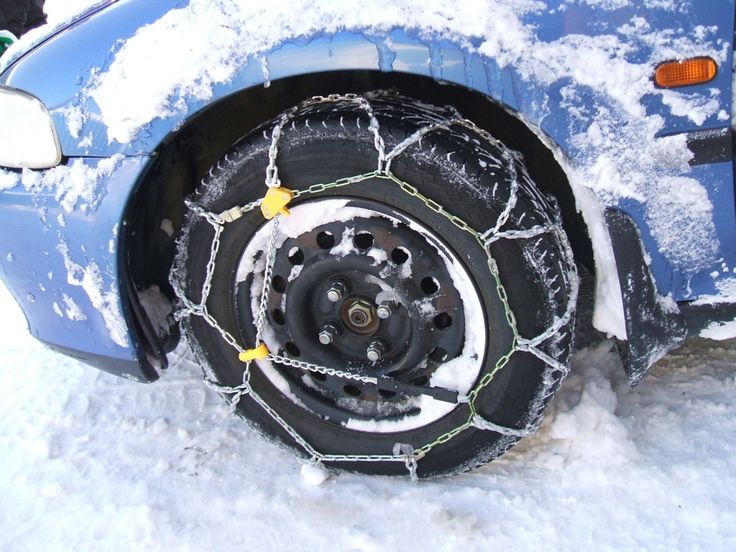 If you tend to drive when the roads are cold as hell but more or less clear and dry, then a performance winter tire is most likely best.
If you tend to drive when the roads are cold as hell but more or less clear and dry, then a performance winter tire is most likely best.
Studless tires are best for when winter is at its worst. These tires have maximum snow and ice traction and are made from a special type of winter compound that provides traction on whatever the texture of the road surface might be. They are designed to grip both the snow and the thin layer of water that usually accumulates in the tire’s footprint.
The colder it gets, the better they work relative to performance winters or all-seasons. Their compromise is that in milder weather, they’re not your best choice.
Performance winter tires are still designed to be used in icy and cold conditions, but they are ideal for clear roads and warmer days. They’re better in the wet and dry, plus they feel better to drive on. Moreover, they have a higher speed rating than their more extreme studless cousins. Performance winter tires won’t have the same bite as studless tires do in the snow, but if, say, you live in a city and don’t drive huge distances every day and still want a nice winter tire in case you get caught in a snow storm, then performance winters are probably your best option.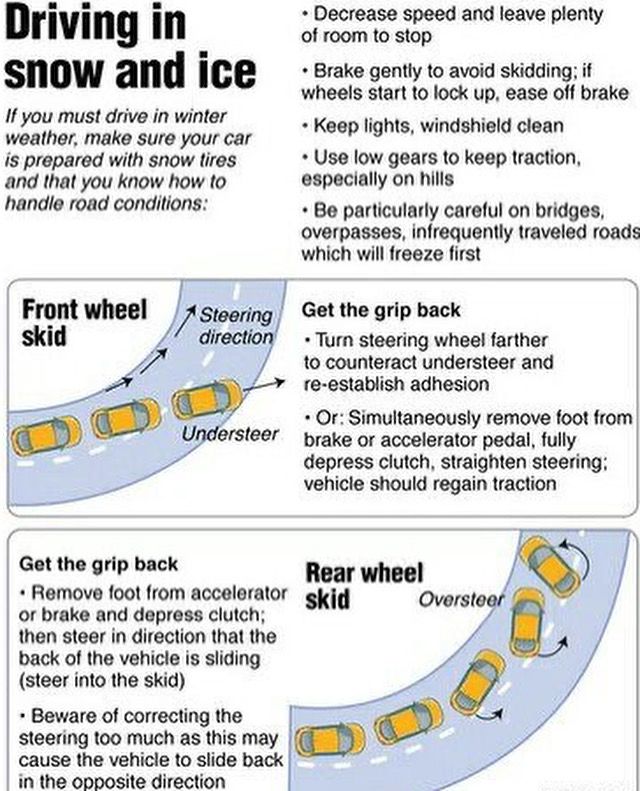
One last thing to look for is the Three-Peak Mountain Snowflake symbol on the sidewall of a winter tire, usually located closer to the rim edge. It looks like this:
The symbol is branded on tires that pass a standardized traction test. It used to be that only winter tires had this symbol, but now some all-seasons have them as well. Keep that in mind when tire shopping. Just because an all-season tire is branded, it still won’t perform as well as a branded winter tire in low-traction conditions.
The M+S symbol means that the tire was also designed to perform well in moderate winter conditions.
If you’re buying a new set of wheels and tires, you should check what your car was originally offered with from the factory to make sure you keep things consistent. Using the same tire size as the OEM is typically the best choice.
You don’t always have to do that, though. For example, if you have 18-inch wheels on your car, but the base model came with 17-inch wheels, you can definitely minus-size your wheels and tires because the car came from the factory designed to utilize the smaller size. You’d probably save some money that way, which is nice.
You’d probably save some money that way, which is nice.
More importantly, driving through snow with narrower tires actually helps prevent you from getting stuck, Rogers pointed out. Narrower tires means there’s less snow to push through, so less resistance. “With wider tread, you’re more likely to start snow plowing or floating on top of the surface instead of pushing down and through,” as Tire Rack has previously explained. “This floating will result in loss of traction sooner than with a thinner or narrower option. A good way to picture this is imagine a pizza cutter slicing through a pizza.”
To determine what size tires to buy for your car, consult the placard in the door jam, usually located on the driver’s side.
One thing to keep in mind here is that you should keep the overall diameter of the wheel and tire together consistent with what the car first came with. Various aspects of the car are calibrated based on this diameter (traction control, speedometer, etc.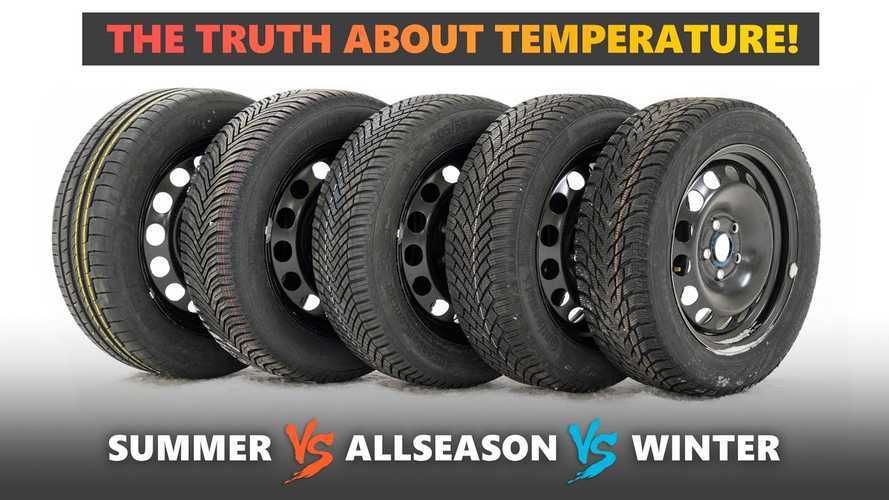 ), so messing with that without first properly doing research can be harmful.
), so messing with that without first properly doing research can be harmful.
Luckily, companies like Tire Rack have databases filled with different wheel and tires sizes from all kinds of different cars. Now, you can go onto the website, specify what kind of tire you are looking for, enter the make and model of your car and see what options have been tested to fit what you need.
Usually, the recommended tire pressure in PSI for winter tires is the same as for other tires. That handy little placard in the door jam will also tell you the advised tire pressure for your tires, but you can also consult your owner’s manual as well.
Sometimes, your manual will recommend you to go with a slightly higher tire pressure, as this can help with the handling and fight off fluctuations in air pressure.
Rogers explained that for every drop in 10 degrees in air temperature, the tires drop one PSI. On top of that, tires on average will lose one PSI for every month you drive your car.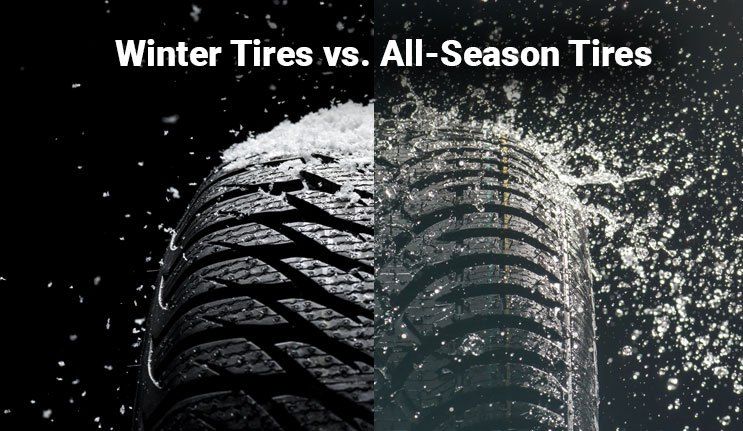 So, if you put your snow tires on your car on November when it was 50 degrees outside, a 10 degree day in January means that you’ve already lost about six PSI in your tires.
So, if you put your snow tires on your car on November when it was 50 degrees outside, a 10 degree day in January means that you’ve already lost about six PSI in your tires.
In a perfect world, we’d have a tire that would be grippy and sticky in the summer, great in the wet and an absolute monster in the snow and ice. As is the nature of things, you can’t have it all, which is why all-season aren’t particularly good at either thing.
“A tire that is designed to withstand the heat of the summer,” cautions Rogers, “cannot also be optimized to work well in the winter.”
Winter tires, though incredible in the snow and ice, admittedly aren’t as good in cold and dry braking conditions. In the dry, the all-seasons are as good or better. But! The reckoning comes with the wet conditions. That’s the trade off for top-tier snow and ice traction.
“The best winter tires do a good job at managing that trade off,” Rogers adds.
Rogers’ personal go-tos for studless tires are the Bridgestone Blizzak WS80s, though the Michelin Xi3s are a close second.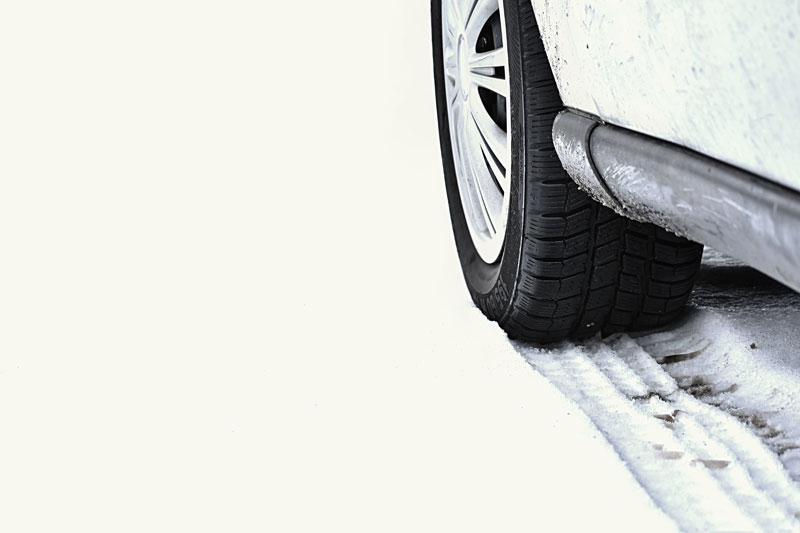 They’re not quite as good on snow and ice, but they’re better in the wet and dry.
They’re not quite as good on snow and ice, but they’re better in the wet and dry.
For performance winters, he recommends the Pirelli Sottozero 3s and the Michelin Pilot Alpin PA4s.
Keep an eye out for the shops that will offer to modify a tire’s tread pattern and claim to increase its snow traction. Steve Carpino, Pirelli’s senior consultant of product design and development, warns that these alterations should not be done to any tires, ever. Tires have been designed by their manufacturer to perform the best from the factory. Tractionizing a tire for ice is a real thing, but it basically entails chopping up your tire. It has severe tradeoffs, like how long the tire lasts (or doesn’t.) If you’re going flat out on a rally stage or a frozen ice race, great. If you’re just driving around, your tire is going to die.
I get why people don’t always buy winter tires. It takes time and money to buy them in the first place and get them mounted each winter. Plus you have to store them when you aren’t using them. (This does does help increase the longevity of your other set of fair weather tires, it should be noted.) All in all, it’s not terribly convenient.
Plus you have to store them when you aren’t using them. (This does does help increase the longevity of your other set of fair weather tires, it should be noted.) All in all, it’s not terribly convenient.
But what you get back is peace of mind and safety. I just returned from driving an all-wheel drive Volvo on a set of all-seasons in the snow last weekend. It was fine in a straight line, but when any kind of sudden braking or turning happened, the car shuddered or just swung its tail out. Not good.
That kind of thing makes you feel nervous and timid whenever it snows. Of course, you should always be cautious when driving in adverse conditions, but the security that comes with having a good set of winter tires helps you free up some of your mind so you can drive even more safely. The difference in feel is something that you have to experience to believe, and you’ll kick yourself for not buying them sooner once you get your first set.
As with everything else you do for your car, you should research, research, research beforehand. Research the best tire, read reviews and look up tests. Certain OEMs have tire recommendations of their own, especially if they are like Porsche or Mercedes and offer high-performance models.
Research the best tire, read reviews and look up tests. Certain OEMs have tire recommendations of their own, especially if they are like Porsche or Mercedes and offer high-performance models.
I won’t BS you: It takes time, but it’ll be worth it.
Can winter tires be used in summer?
When the weather turns hot in summer, both temperature and road conditions change. And although it seems quite logical to change the tires on the car when the season changes, not all drivers have time to do it on time. Moreover, some believe that winter tires from European manufacturers are designed for the "European winter", which is supposedly soft, so that such tires can be used in Russia in the summer. Is this really true and what is the potential cost of a mistake?
How a winter tire differs from a summer one
The differences are primarily due to the different conditions in which winter and summer tires operate, when it is required to provide maximum grip and driving stability, based on temperature and asphalt conditions.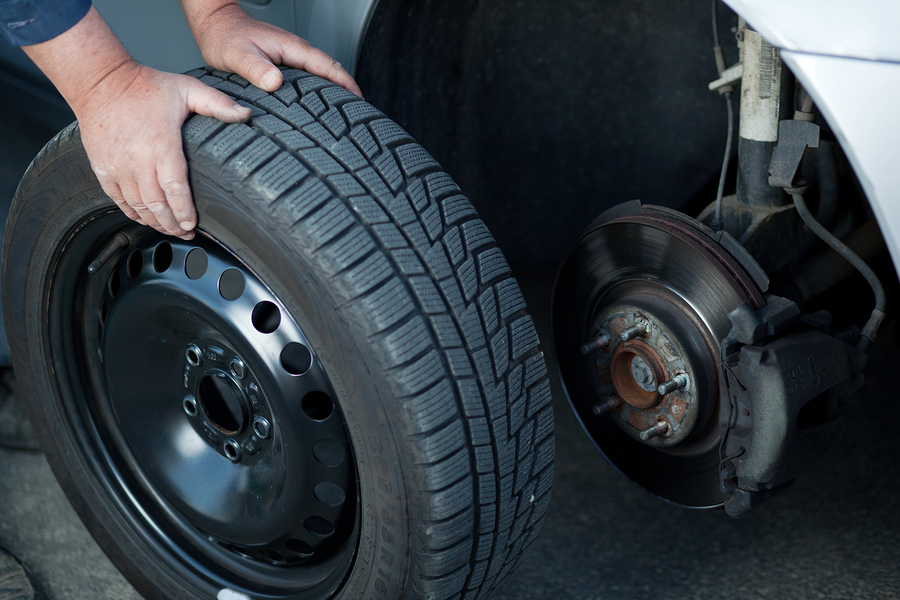 Therefore, there are differences in the production technology of winter and summer tires. An all-season tyre, which occupies an intermediate position between a summer and a winter tire, however, in the heat, it does not perform as well as a summer tire, and in a cold, not as well as a winter one. Thus, a pneumatic tire is a winter tire if the design of the tire, the rubber compounds used in its production, and the tread pattern are specially designed to guarantee increased grip on icy and snow-covered surfaces compared to a conventional summer tire.
Therefore, there are differences in the production technology of winter and summer tires. An all-season tyre, which occupies an intermediate position between a summer and a winter tire, however, in the heat, it does not perform as well as a summer tire, and in a cold, not as well as a winter one. Thus, a pneumatic tire is a winter tire if the design of the tire, the rubber compounds used in its production, and the tread pattern are specially designed to guarantee increased grip on icy and snow-covered surfaces compared to a conventional summer tire.
Winter tires must be marked with the symbols "M+S" or "M&S" or "M S". The manufacturer of a winter tire, in addition to this mandatory marking, may apply an additional marking in the form of a snowflake against the background of a three-headed mountain peak:. This marking indicates that the winter tire is suitable for operation in severe winter conditions, including dense and packed snow, which is confirmed by the high results of special test tests.![]() Tires with such a pictogram are usually considered real winter tires. The designation “M + S” on tires literally translates as “mud and snow”. The developers of such tires sought to improve the performance of such tires when driving on mud, freshly fallen or beginning to melt snow. Many all-season tires can carry this label, but not all that have it are tested as tires for severe winter conditions. So, a real winter tire always has the “M + S” marking and the snowflake icon against the background of three mountain peaks at the same time.
Tires with such a pictogram are usually considered real winter tires. The designation “M + S” on tires literally translates as “mud and snow”. The developers of such tires sought to improve the performance of such tires when driving on mud, freshly fallen or beginning to melt snow. Many all-season tires can carry this label, but not all that have it are tested as tires for severe winter conditions. So, a real winter tire always has the “M + S” marking and the snowflake icon against the background of three mountain peaks at the same time.
Differences in the rubber composition of winter and summer tires
In the manufacture of various elements of the tire, rubber compounds of different properties and purpose are used.
Compounds for winter tires must be such that the structural elements of winter tires retain their performance to the maximum extent possible in the temperature range characteristic of a particular climatic zone. Usually the range from positive 5 - 10°C to negative 40 - 45°C is implied.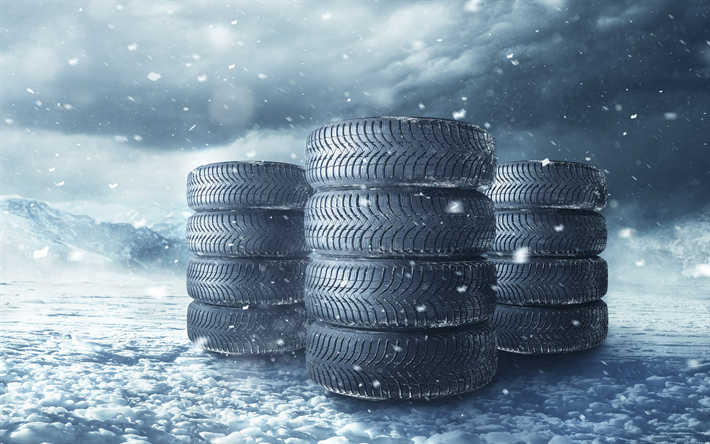 Unlike winter tires, the rubber compounds of summer tires must ensure the effective functioning of the tire at positive temperatures, up to 50 - 55°C. At a positive temperature close to 0°C, the functional characteristics of the rubber compounds of a summer tire noticeably decrease, and at negative temperatures they deteriorate sharply, which makes it very dangerous to use a summer tire in winter at a negative temperature.
Unlike winter tires, the rubber compounds of summer tires must ensure the effective functioning of the tire at positive temperatures, up to 50 - 55°C. At a positive temperature close to 0°C, the functional characteristics of the rubber compounds of a summer tire noticeably decrease, and at negative temperatures they deteriorate sharply, which makes it very dangerous to use a summer tire in winter at a negative temperature.
Differences in tread pattern
Winter tires have a tread adapted to winter conditions. It is deeper, its elements are larger, the structure itself is more sparse. Numerous lamellas (narrow sipes, the width of which is 5-10 times less than the width of the other tread grooves), oriented in different directions, increase the controllability and braking efficiency of the car on snow and ice, as well as increase the grip of the tire on the winter road and the braking efficiency of the car . Winter tire tread grooves are usually wider and deeper than summer tire tread grooves.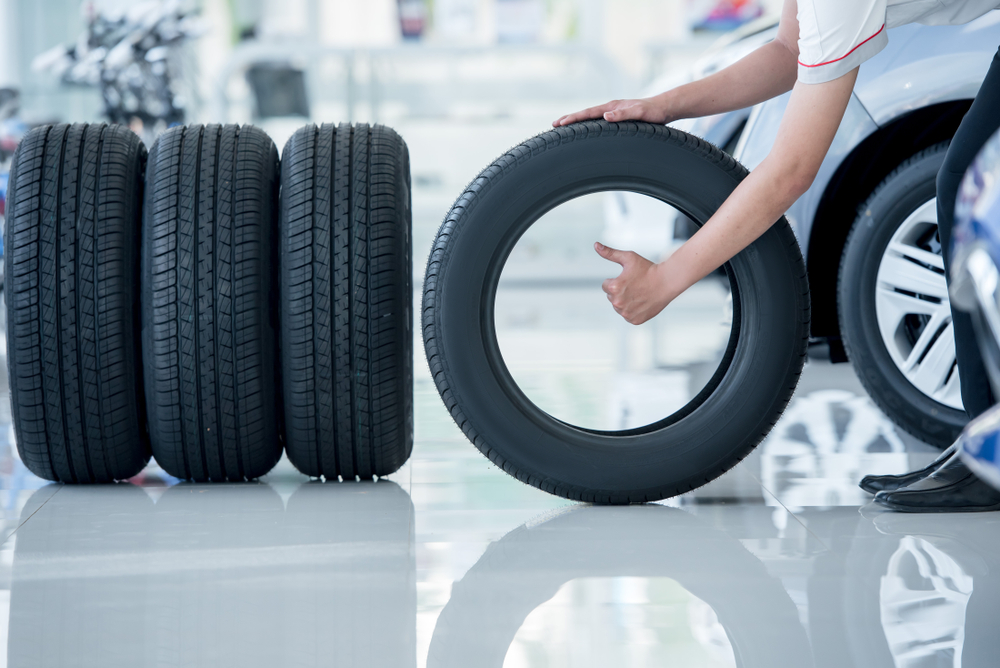 Unlike a summer tire, the tread pattern of a winter tire should provide not only effective water drainage, but also the removal of a mixture of snow and water (snow-water sludge) from the contact patch of a winter tire with the road. In addition, the tread of some winter tires can be equipped with anti-skid studs, which provide increased grip on ice and packed snow. For any tire, the norm of the residual tread depth is set by law, upon reaching which the tire must be removed from service. The tire manufacturer must provide for the presence in the tread pattern of indicators that the tread wear limit has been reached, which help the driver to understand in a timely manner that the tread depth is the minimum permissible and the operation of such a tire should be immediately discontinued. For a winter passenger tire that is operated on an icy or snowy road surface, this rate is 4 millimeters.
Unlike a summer tire, the tread pattern of a winter tire should provide not only effective water drainage, but also the removal of a mixture of snow and water (snow-water sludge) from the contact patch of a winter tire with the road. In addition, the tread of some winter tires can be equipped with anti-skid studs, which provide increased grip on ice and packed snow. For any tire, the norm of the residual tread depth is set by law, upon reaching which the tire must be removed from service. The tire manufacturer must provide for the presence in the tread pattern of indicators that the tread wear limit has been reached, which help the driver to understand in a timely manner that the tread depth is the minimum permissible and the operation of such a tire should be immediately discontinued. For a winter passenger tire that is operated on an icy or snowy road surface, this rate is 4 millimeters.
The tread pattern of a summer tire is designed taking into account the specifics of tire operation in summer conditions, usually these are good roads, high speeds, increased requirements for driving comfort, efficiency and mileage of a summer tire, and safety on wet roads.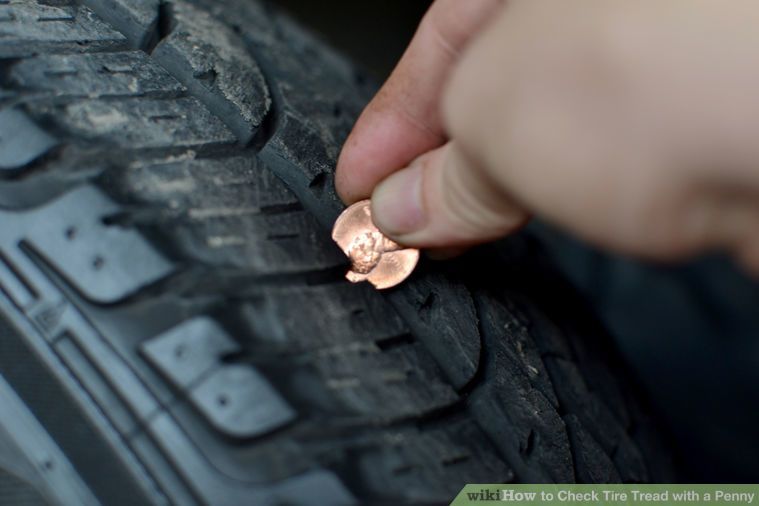 The number of sipes in the tread pattern of a summer tire is significantly less than that of a winter tire. The summer tire tread cannot be equipped with anti-skid studs. For a summer passenger tire, the legally established norm for the residual tread depth, upon reaching which the summer tire must be taken out of service, is 1.6 mm.
The number of sipes in the tread pattern of a summer tire is significantly less than that of a winter tire. The summer tire tread cannot be equipped with anti-skid studs. For a summer passenger tire, the legally established norm for the residual tread depth, upon reaching which the summer tire must be taken out of service, is 1.6 mm.
Effects of using a winter tire in summer
Winter tires have improved grip on snowy and icy roads. If you use winter tires on dry road surfaces, you may encounter a deterioration in vehicle handling, an increase in braking distances, an increased risk of aquaplaning, excessive heat generation in the tire, faster wear of the tread part of the winter tire, and a rather high level of noise generated by the tire. Winter studded tires destroy dry pavement with their studs, thereby causing harm not only to the road itself, but also to the environment. Winter tires are usually heavier than summer tires of similar size, the groove depth and saturation of the sipes in the tread pattern are greater, which leads to the deterioration of such an important tire property as fuel efficiency for motorists.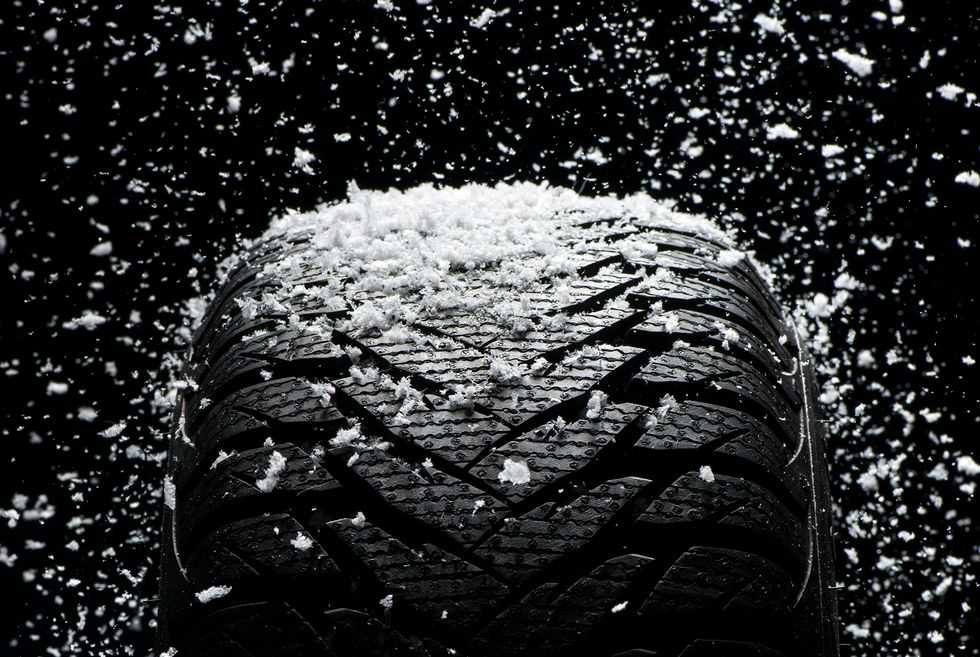
The time when it is necessary to change tires
As for the procedure for using winter tires, it is defined in the technical regulation of the Customs Union "On the safety of wheeled vehicles" (abbreviated as TR CU), which was approved by the Commission of the Customs Union in 2011, and entered into effect in January 2015.
In particular, the TR CU establishes that during the winter period (December, January, February) it is forbidden to operate vehicles that are not equipped with winter tires, but in the summer period (June, July, August) it is forbidden to operate vehicles equipped with winter tires. studded tires. Moreover, these time intervals can be changed by the relevant government bodies and changed only in the direction of expansion.
Thus, during the summer period (June, July, August), the law does not prohibit the operation of winter non-studded tires (sometimes they are also called friction, and in household jargon “Velcro”). But, nevertheless, these are winter tires and the manufacturers of these tires sought to put in them the maximum performance characteristics (and, above all, safety characteristics!), Which manifest themselves precisely on winter roads. It does not matter whether these tires are recommended for operation in severe winter conditions or in mild (sometimes the term "European") winter is used. In terms of safety, comfort, economy, winter studless tires cannot compete with tires specially designed for operation in the summer, namely, with summer tires.
It does not matter whether these tires are recommended for operation in severe winter conditions or in mild (sometimes the term "European") winter is used. In terms of safety, comfort, economy, winter studless tires cannot compete with tires specially designed for operation in the summer, namely, with summer tires.
With this in mind, tire manufacturers usually recommend replacing winter tires with summer tires if the average daily air temperature exceeds +7 °C.
{{#suggestions.length}}
{{/suggestions.length}} {{/total_hits}} {{#total_hits}} 9image}}{{#icon}}{{{icon}}}{{/icon}}{{/image}}
{{#description}}
{{{description}}}
{{/description}}
{{/hits}}
{{#showAllResults}}
Show all results
{{/showAllResults}} {{/total_hits}}
Russia
Danmark
Deutschland
France
Global (English)
Italy
Nederland
North America (English)
North America (French)
Polska
Switzerland
Sverige
Osterreich
Belarus
Bulgaria
Kazakhstan
Ukraine 9expander. close}}-{{/expander.close}}
close}}-{{/expander.close}}
{{/children.length}}
{{/href}} {{#children.length}}{{text}}
1. PURCHASE NOKIAN TIRES FROM A PROGRAM MEMBER
Choose a convenient retail location on the map or see the full list of
2. ACTIVATE THE WARRANTY
Register your purchase within 30 days on the activation page using the data from the receipt. If you contact us, we will be able to identify you according to the data entered for the provision of services.
If you contact us, we will be able to identify you according to the data entered for the provision of services.
Extended Warranty Paper Vouchers also remain valid for the duration of the Promotion Terms.
3. REPAIR/REPLACE YOUR DAMAGED TIRE FREE OF CHARGE
Nokian Tires Hakka Blue 3 SUV
Nokian Tires Hakka Blue 2
Nokian Tires Hakka Blue 2 SUV
Nokian Tires Hakka Green 3
Nokian Tires Hakka Van
Nokian Tires Hakka C2
Nokian Tires Nordman 8
Nokian Tires Nordman 8 SUV
Nokian Tires Nordman 7
Nokian Tires Nordman 7 SUV
Nokian Tires Nordman RS2
Nokian Tires Nordman RS2
Nokian Tires Nordman RS2
0003
Nokian Tires Nordman SZ2
Nokian Tires Nordman S2 SUV
Nokian Tires Outpost AT (when purchased from 15.08.2022)
*up to 4 mm tread depth
 nokiantyres.ru partners provide an Extended Warranty
nokiantyres.ru partners provide an Extended Warranty What documents are required to apply for an Extended Warranty?
Do I need an appointment to apply for an Extended Warranty?
When is a tire repaired and when is it replaced?
Will I get a free tire service under the Extended Warranty?
In what cases is the Extended Warranty Service not available to the Buyer?
Still have questions about Extended Warranty? We are ready to help you around the clock.